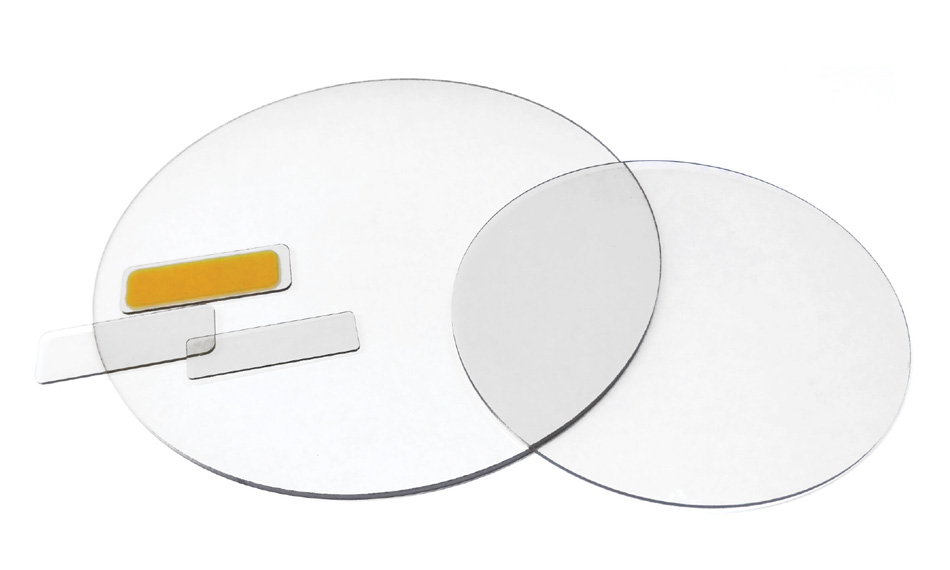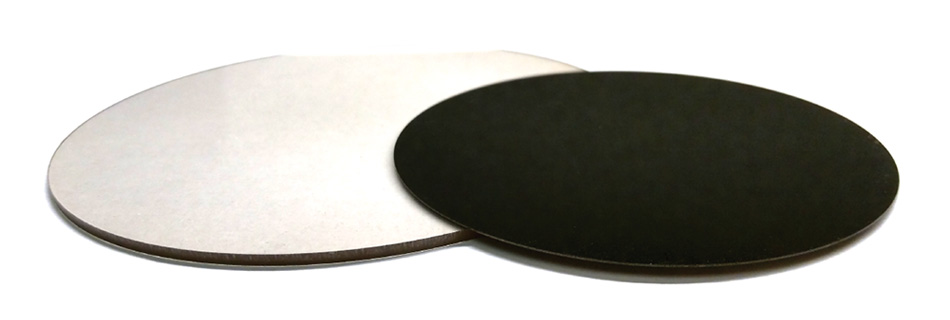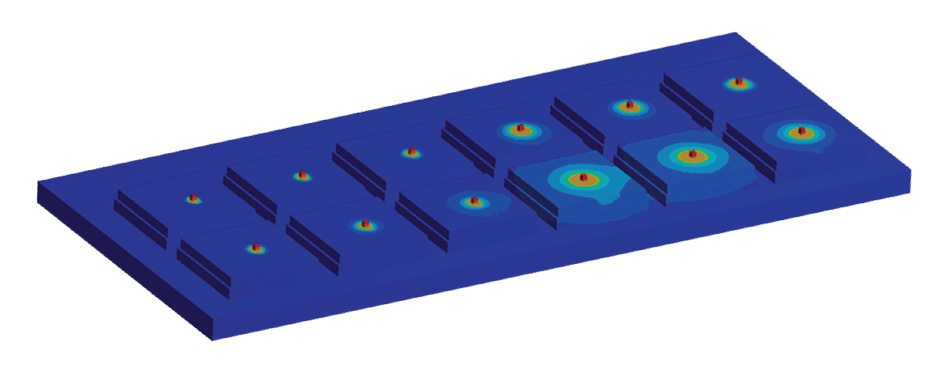The Cold Hard Facts about Diamond Heat Spreaders
An unmatched combination of high thermal conductivity and extreme electrical insulation is key to the growing use of these synthetic diamond components.
November 1, 2023 by Coherent

Diamond heat spreaders, also known as diamond thermal spreaders or diamond heat sinks, are passive components, made of synthetic diamond, that help dissipate potentially damaging heat generated in many electronic and photonic devices. Examples include high-power RF devices used in satellite communications, high-power laser diodes, high-power laser mirrors, and disk lasers.
A typical diamond heat spreader is a thin (up to 2 mm) sliver of synthetic diamond placed between the heat source and an actively or passively cooled heat sink. Good mechanical contact is essential; many applications utilize soldering or brazing, with mechanical clamping also occasionally used instead. These diamond heat spreaders offer several advantages over traditional thermal management materials like copper or aluminum, making them valuable in applications where efficient heat dissipation is critical.
An Unmatched Combination of Electrical and Thermal Properties
While diamond is universally known for its hardness, there are actually two other properties - its electrical and thermal characteristics – that are key to diamond’s fast-growing use in heat spreaders.
Highest Thermal Conductivity. Diamond is an exceptional conductor of heat, with a thermal conductivity value of approximately 1,500-2,200 W/mK, depending on the product grade. This is significantly higher than that of other common materials like copper (up to 400 W/mK) and aluminum (up to 220 W/mK). This high thermal conductivity enables diamond to transfer heat away from heat sources more efficiently than any other material.
Best Electrical Insulator: If you want to draw heat from an electronic component and dissipate it in a metal heat sink, why use a diamond heat spreader as an extra interface layer rather than directly contacting? The main reason is that diamond is not only the best thermal conductor, it’s also a superb electrical insulator. It has similar electrical properties to glass and ceramics which have been widely used for electrical insulation for well over a century. So a diamond heat spreader is a prime candidate for any application where you need the highest possible heat flow and electrical isolation. That’s why so many of its applications involve high-power electronic or photonic components.

Several Other Advantages of Diamond
Diamond has several other advantages which can be important considerations in certain heat spreader applications.
Lightweight. Diamond heat spreaders are lightweight for two reasons. First, diamond is an inherently lightweight material. And second, because it’s such an effective insulator with extremely high breakdown properties, heat spreaders can be very thin. This is an advantage in satellite and other aerospace applications where overall system weight must be minimized.
Thermal Stability. Diamond has a low coefficient of thermal expansion, meaning it doesn't expand or contract significantly with changes in temperature. This characteristic helps maintain the integrity of devices like heat spreaders that are subject to thermal gradients. It also improves the long-term stability of these devices.
Corrosion Resistance. Diamond is highly resistant to chemical corrosion, including immunity to strong acids, bases, and even organic solvents. This makes diamond heat spreaders ideal for industrial and other applications where harsh environments may be encountered.
Exceptional Hardness. As most readers will already be aware, diamond is one of the hardest known materials, which is why synthetic diamond is widely used to coat saw blades and other edge tools for example. In the context of heat spreading, this toughness can be beneficial for applications where mechanical durability and abrasion resistance are required.
Optically Transparent. Diamond is optically transparent when created in an ultrapure form. Most heat spreader applications don’t need high optical transparency, but if they do, Coherent recommends using our Optical Grade material rather than one of our Thermal Grades.
How We Make Better Synthetic CVD Diamond Spreaders
Coherent makes diamond by a chemical vapor deposition process. In a special high-temperature chamber, intense microwaves are used to create a plasma in carbon-containing methane gas. This releases free carbon atoms which deposit on a seed layer of diamond, slowly building up a wafer of polycrystalline CVD diamond.
Through tuning of this growth process, Coherent has perfected the capability of generating polycrystalline CVD diamond for a variety of high-performance temperature management applications. We offer several Thermal Grades, with the highest grade delivering a thermal conductivity of more than 2200 W/mK.
Using our world-class fabrication facility, we are able to create parts based on customer specifications with shapes as large as 145mm in diameter and thicknesses of up to 2mm and more that are ultra-flat and ultra-smooth to ensure optimum thermal contact to your device. Our diamond heat spreaders effectively distribute and dissipate heat away from heat-generating components, reducing the risk of overheating and prolonging the lifespan of electronic devices.

Thermal Model of High-powered Laser Diode on SiC/Dia/Cu vs pure Cu Stack: The diode in the model is programmed to have a high internal heat generation of 2200 W/mm3. The six structures on the left are a diode/SiC/Ti/Diamond stack while the six on the right are a diode/Cu stack. All twelve structures are bonded onto a water-cooled copper plate.
So Who Uses our Diamond Heat Spreaders?
Diamond heat spreaders offer an attractive solution for managing thermal issues and maintaining the performance and longevity of critical electronic and photonic components. That’s why our heat spreader products are used in industries where efficiency and reliability are paramount, such as aerospace, military, and high-performance computing.
Specific examples include high-performance CPUs and GPUs in computers and servers, particularly in datacenter applications where higher performance is needed to support the growth in artificial intelligence (AI) and machine learning (ML) applications. They are also used in many LED lighting systems, particularly those involving high-intensity devices. Other applications of our diamond heat spreaders include satellite and aerospace equipment, such as high-power radio-frequency (RF) devices used in satellite communications.
Photonic applications for our heat spreaders include high-power laser diodes and laser optics. We also supply these for use with some power electronic components. And finally, the rapid growth in e-mobility and autonomous vehicles is creating another market for our diamond heat spreaders - for use with some of the high-power electronic components.
When you need to use diamond as a thermal heat spreader, Coherent gives you the coolest solution.
Learn more about Coherent CVD Diamond Substrates.


